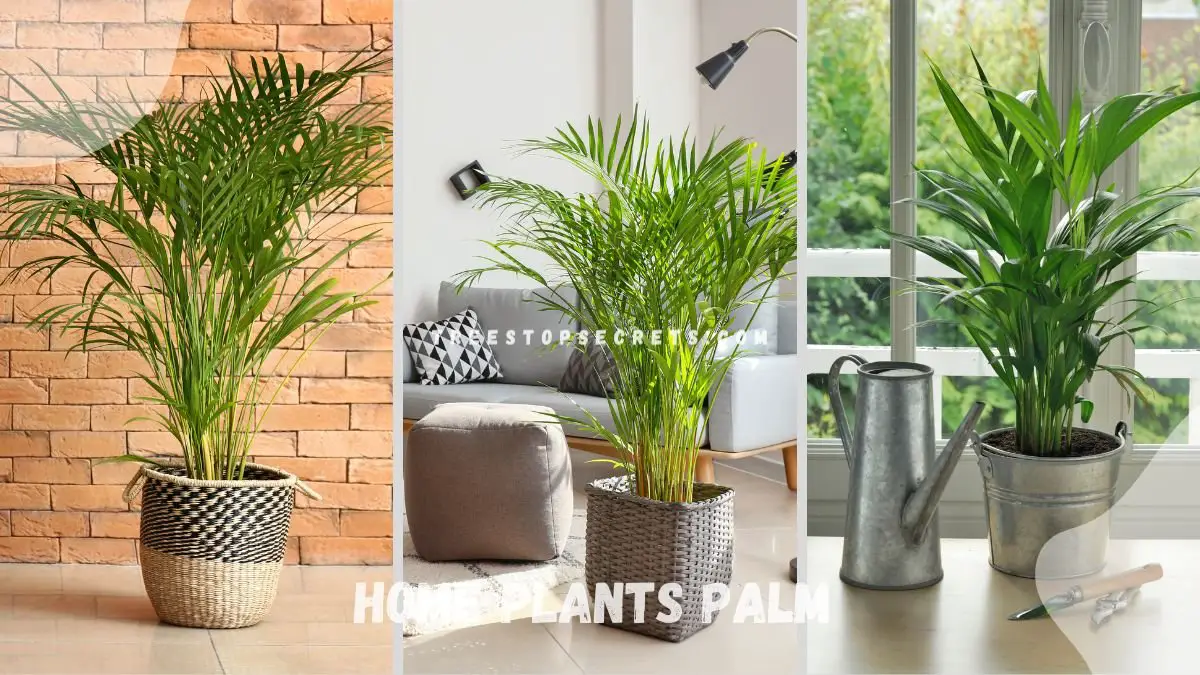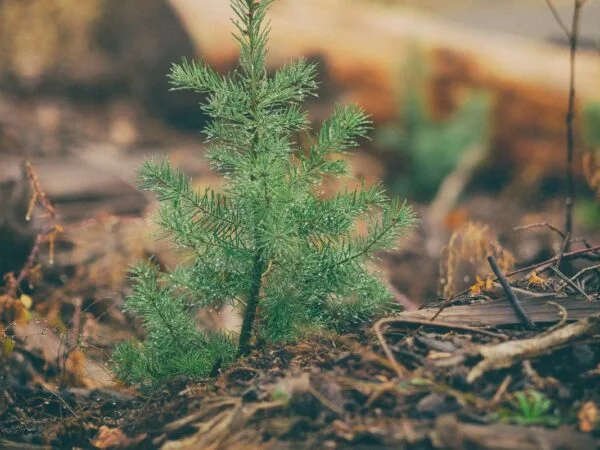Looking to add a touch of green to your living space with indoor palm trees? Ever considered the charm of home plants, particularly palms? Picture this: lush, vibrant foliage enhancing your decor while purifying the air you breathe. Intrigued by the idea of welcoming these botanical beauties into your home?
Discover how easy it can be to care for palm plants, transforming your space into a tranquil oasis. From elegant Areca Palms to low-maintenance Parlor Palms, there's a variety to suit every lifestyle and aesthetic. Join us as we delve into the world of home plants, focusing on the beauty and benefits of palms.
Key Takeaways
- Enhance Your Indoor Environment: Indoor palm plants offer numerous benefits such as improved air quality and a touch of nature indoors.
- Select Wisely: When choosing a palm plant, consider factors like space, lighting, and care requirements to ensure the best fit for your home.
- Explore Palm Variety: There is a wide range of popular palm varieties to choose from, each with unique characteristics and care needs.
- Care with Caution: Follow essential care tips like proper watering, light exposure, and humidity levels to keep your palm plant healthy and thriving.
- Level Up Your Care: Advance your plant care techniques by learning about fertilization, pruning, and pest control strategies specific to palm plants.
- Address Issues Promptly: Troubleshoot common problems like browning leaves or pest infestations promptly to maintain the health of your indoor palms.
Benefits of Indoor Palms
Air Purification
Indoor palm plants, such as the Areca palm and Lady palm, naturally filter the air by absorbing toxins through their leaves. This process helps eliminate harmful pollutants like formaldehyde and benzene. The indoor palms' ability to purify the air makes them ideal for enhancing indoor air quality.
Indoor palm plants carry out air purification through a mechanism called phytoremediation. This process involves the plant absorbing pollutants through its roots and leaves, converting them into nutrients. By doing so, indoor palm plants play a crucial role in creating a healthier living environment.
- Pro: Efficiently removes toxins from indoor air.
- Pro: Enhances overall air quality in enclosed spaces.
Aesthetic Appeal
The slender trunks and lush green fronds of indoor palm plants add an element of elegance to any room. Their tropical appearance, with a palm plant, can instantly transform spaces into tranquil oases, reminiscent of exotic getaways. Indoor palm plants come in various sizes and shapes, such as the Parlor palm and Kentia palm, offering versatility in interior design.
Indoor palm plants create an ambiance of relaxation and sophistication with their vibrant foliage and unique textures. Whether placed in a living room or office, these plants bring a touch of nature indoors, elevating the aesthetic appeal of the space.
- Pro: Adds a touch of elegance to interior decor.
- Pro: Creates a tropical ambiance in any setting.
Stress Reduction
Having indoor palm plants around can significantly reduce stress levels due to their calming presence. The gentle rustling of their leaves and the sight of greenery can have a soothing effect on one's mental well-being. Studies have shown that being around indoor plants like palms can lower cortisol levels, promoting relaxation and reducing anxiety.
Indoor palm plants contribute to a serene atmosphere that promotes tranquility and peace of mind. Whether at home or work, these plants serve as natural stress relievers, fostering a sense of calmness amidst the hustle and bustle of daily life.
- Pro: Promotes relaxation and reduces anxiety.
- Pro: Enhances overall well-being by creating a peaceful environment.
Choosing Your Palm Plant
Space Considerations
When placing palm plants in your home, consider their size and growth habits to ensure they have enough space to thrive. Delicate palm plants like the Areca Palm or Parlor Palm are perfect for small rooms. Larger spaces can accommodate majestic live palm trees such as the Kentia Palm or Bamboo Palm.
Optimize space by placing smaller palm houseplants on shelves or countertops. Hanging delicate palms can add a touch of greenery without taking up floor space. Versatile indoor palm plants can adapt to different room sizes, making them suitable for any home environment.
Light Requirements
Indoor palm plants thrive in bright, indirect sunlight, replicating their natural habitat under the canopy of taller trees. Adequate light is crucial for the growth and health of your palm plants, ensuring vibrant foliage and strong stems. Position palms near east or west-facing windows to provide the ideal lighting conditions.
To maintain proper lighting, rotate your palm plants regularly to ensure even exposure to sunlight. Use sheer curtains or blinds to filter intense sunlight and prevent leaf scorching. Consider using grow lights for areas with limited natural light to supplement your palm's lighting needs.
Maintenance Levels
Caring for indoor palm plants is relatively low maintenance, making them an excellent choice for beginners or busy individuals. Water your palms when the top inch of soil feels dry, avoiding overwatering which can lead to root rot. Mist the leaves occasionally to increase humidity levels and prevent browning tips.
Ensure good drainage by using pots with drainage holes to prevent waterlogging. Dust the leaves regularly with a damp cloth to keep them clean and free from dust buildup. Prune yellowing or damaged fronds to promote new growth and maintain the plant's overall health.
Popular Palm Varieties
Pygmy Date Palm
The Pygmy Date palm stands out with its compact size and graceful fronds, making it a popular choice for indoor settings. This palm requires bright, indirect light and regular watering, allowing the soil to dry slightly between waterings. To thrive, maintain a consistent temperature and high humidity levels for the Pygmy Date palm.
- Unique Features:
- Compact size
- Graceful fronds
- Care Specifics:
- Bright, indirect light
- Regular watering
- Consistent temperature
- Ideal Environments:
- Indoors with high humidity levels
Coconut Palm
The Coconut palm is known for its tropical charm and can reach impressive heights, adding a touch of exotic beauty to any space. These palms require full sunlight and well-draining soil, along with regular watering and occasional fertilization. In indoor spaces, Coconut palms create a stunning visual impact with their tall, elegant stature.
- Characteristics:
- Tropical charm
- Impressive height
- Care Needs:
- Full sunlight
- Well-draining soil
- Regular watering
- Visual Impact:
- Tall and elegant presence
Cat Palm
The Cat palm features arching fronds and a lush appearance, perfect for adding a touch of greenery to office environments. These palms thrive in low light conditions and require moderate watering. Providing adequate humidity is essential for the health and vibrancy of Cat palm plants.
- Distinctive Characteristics:
- Arching fronds
- Lush appearance
- Suitability for Offices:
- Thrives in low light
- Moderate watering
- Care Tips:
- Ensure adequate humidity
Sago Palm
The Sago palm boasts feathery foliage and a unique growth pattern, making it an eye-catching addition to home decor. These palms prefer well-draining soil and indirect sunlight, requiring minimal watering. Despite their striking appearance, Sago palms are toxic to pets if ingested.
- Unique Qualities:
- Feathery foliage
- Unique growth pattern
- Care Requirements:
- Well-draining soil
- Indirect sunlight
- Minimal watering
- Visual Appeal:
- Eye-catching addition to home decor
Essential Care Tips
Water and Light
When caring for indoor palm plants, water them thoroughly but allow the soil to dry out between waterings. Light exposure is crucial; place palms in bright, indirect sunlight for optimal growth. Overwatering can lead to root rot, while inadequate lighting may cause stunted growth.
Maintaining a balance between watering frequency and light exposure is essential for the overall health of indoor palm plants. Too much water can suffocate roots, leading to fungal diseases, while insufficient light can weaken the plant and hinder photosynthesis.
Issues such as overwatering can result in yellowing leaves or mold growth, while inadequate lighting may cause pale or drooping foliage in indoor palm plants.
Temperature and Humidity
Indoor palm plants thrive in temperatures ranging from 65-85°F (18-29°C) and require moderate humidity levels between 50-60%. Maintaining suitable temperature and humidity levels is vital for the growth and well-being of palm plants indoors.
Fluctuations in temperature can stress indoor palm plants, affecting their overall health and growth. Inconsistent humidity levels may lead to leaf browning or drying out in palm plants, impacting their appearance and vitality.
To create an ideal environment for indoor palm plants, consider using a humidifier to regulate moisture levels and placing them away from drafts or heating vents to maintain stable conditions.
Soil and Fertilizer
Indoor palm plants thrive in well-draining soil that allows excess water to escape easily, preventing waterlogged conditions. When it comes to fertilization, apply a balanced liquid fertilizer every 2-4 weeks during the growing season to support healthy growth.
The quality of the soil directly impacts the root health and nutrient absorption of indoor palm plants. Choosing a high-quality potting mix specifically designed for palms can enhance their growth and resilience against diseases.
Fertilizers play a crucial role in providing essential nutrients for indoor palm plants. Opt for a balanced fertilizer with equal parts nitrogen, phosphorus, and potassium to promote strong root development and lush foliage.
Advanced Care Techniques
Repotting Tips
Repot indoor palm plants every 2-3 years to ensure they have enough space for growth. Signs that your palm needs repotting include roots growing out of the drainage holes and slow growth. To repot, gently remove the plant from its current pot, loosen the roots, place it in a larger container with fresh soil, and water thoroughly.
When repotting, choose a pot that is 1-2 inches larger in diameter than the current one to prevent overpotting. Use a well-draining soil mix to avoid waterlogged roots. Ensure the new pot has drainage holes to prevent root rot.
- Signs that indicate repotting is needed:
- Roots growing out of the drainage holes
- Slow growth compared to usual
- Soil drying out quickly after watering
Propagation Methods
Propagating indoor palm plants can be done through division, seeds, or offshoots. Division involves separating a mature plant into smaller sections, each with roots attached. Seeds require patience as they can take months to germinate. Offshoots are small plants that grow from the base of the parent plant.
Different palm species may require specific propagation methods. For example, Areca palms are best propagated through division, while Majesty palms thrive when grown from seeds. Benefits of propagating palm plants at home include expanding your plant collection and saving money on buying new plants.
- Methods of propagating indoor palm plants:
- Division: splitting a mature plant into smaller sections
- Seeds: planting seeds and waiting for them to germinate
- Offshoots: growing new plants from existing ones
Troubleshooting Common Issues
Yellowing Leaves
Yellowing leaves in indoor palm plants can signal various issues. Overwatering is a common culprit, leading to root rot and leaf discoloration. Insufficient light can also cause yellowing.
To address yellowing leaves, adjust the watering frequency and ensure proper drainage. Prune yellowed leaves to promote new growth. Regularly dust the leaves to improve light absorption.
Prevent yellowing by placing palms in bright, indirect sunlight. Maintain consistent humidity levels and avoid temperature fluctuations. Use well-draining soil to prevent waterlogging.
Pest Problems
Common pests like spider mites, mealybugs, and scale insects can harm indoor palm plants. These pests feed on plant sap, causing leaf damage and stunted growth.
To tackle pest infestations, inspect plants regularly for signs of pests such as webbing or sticky residue. Isolate affected plants to prevent spread and treat with insecticidal soap or neem oil.
Prevent pests by keeping plants clean and free of debris. Introduce beneficial insects like ladybugs to control pest populations naturally. Quarantine new plants before introducing them to your palm collection.
Slow Growth
Several factors can contribute to slow growth in indoor palm plants, including low light levels, nutrient deficiencies, and root-bound conditions. Addressing these factors is crucial for promoting healthy growth.
To encourage growth, relocate plants to brighter areas or supplement with grow lights. Fertilize palms regularly with a balanced fertilizer, focusing on micronutrients like iron and magnesium. Repot overcrowded plants to allow roots room to expand.
Assess slow growth by monitoring leaf color and size. If growth remains sluggish, consider repotting or adjusting care routines. Remember that patience is key when fostering healthy growth in indoor palm plants.
Transforming Spaces with Palms
Enhancing Decor
Palm plants can transform your living space into a tropical paradise. Place them in stylish planters to add a touch of natural elegance.
Palms like the Areca Palm, with its graceful fronds, can brighten up any room and create a relaxing ambiance.
Visual Impact
Create a stunning focal point by placing a tall Kentia Palm in a corner. Its lush green leaves will draw the eye and add a splash of color.
Mix different palm varieties like the Parlour Palm and the Lady Palm to create a diverse and visually appealing display.
- Pros:
- Adds a touch of nature
- Enhances air quality
- Cons:
- Requires specific care
- Limited to certain lighting conditions
Arrangement Tips
When arranging palm plants, consider their light requirements. For instance, place the Majesty Palm near a window for optimal growth.
Use varying heights and textures to create an interesting display. Combine palms with trailing plants like the Spider Plant for a dynamic look.
- Start by selecting a mix of tall and bushy palms.
- Place them strategically around the room to create balance.
- Use decorative pots that complement your home's aesthetic.
- Ensure proper watering and sunlight for each palm variety.
Final Remarks
Incorporating indoor palm plants into your living space can bring numerous benefits. From purifying the air to adding a touch of nature's beauty, palms are versatile and relatively easy to care for. By selecting the right variety and following essential care tips, you can transform your home into a green oasis. Remember to troubleshoot common issues promptly and explore advanced care techniques to ensure your palm thrives.
Now that you're equipped with knowledge about choosing, caring for, and troubleshooting palm plants, it's time to take action. Enhance your living environment by incorporating these lush greens into your decor. Share your newfound expertise with friends and family to spread the joy of indoor gardening. Your journey to creating a vibrant and healthy indoor space starts now.
Frequently Asked Questions
Can indoor palms improve air quality in my home?
Yes, indoor palms can help improve air quality by removing toxins and increasing humidity levels, creating a healthier environment for you and your family.
How do I choose the right palm plant for my home?
Consider factors like space availability, light conditions, and desired maintenance level when choosing a palm plant for your home. Research different varieties to find one that fits your specific needs.
What are some popular palm varieties for indoor spaces?
e popular palm varieties for indoor spaces include Areca Palm, Parlor Palm, Lady Palm, and Kentia Palm. These varieties are known for their adaptability to indoor conditions and aesthetic appeal.
What are essential care tips for maintaining indoor palm plants?
Provide adequate sunlight, water thoroughly but allow soil to dry out between waterings, maintain proper humidity levels, and periodically fertilize to ensure the health and vitality of your indoor palm plants.
How can I troubleshoot common issues with my indoor palm plants?
Common issues like yellowing leaves, brown tips, or pest infestations can be addressed by adjusting watering frequency, improving humidity levels, checking for pests regularly, and ensuring proper drainage in the plant's container.
Image Source: Paid image from CANVA





